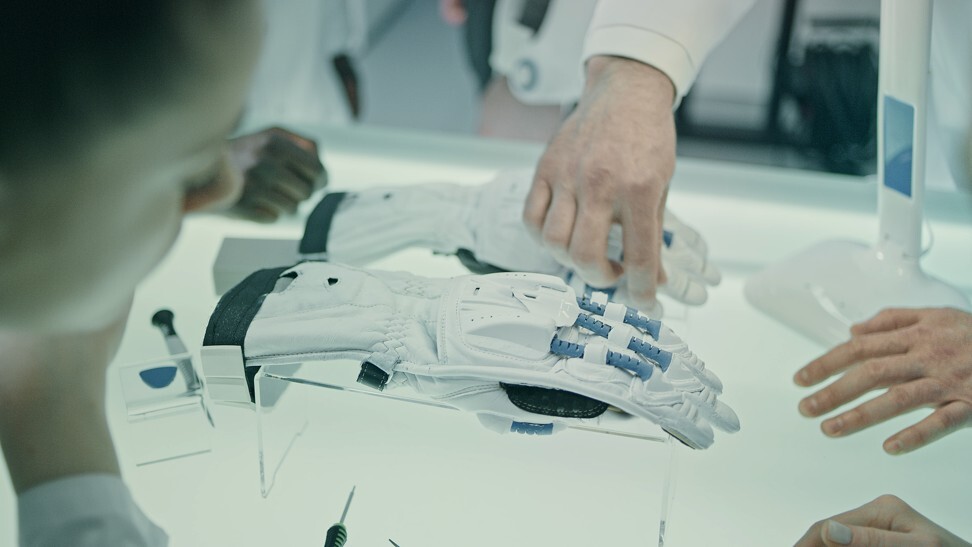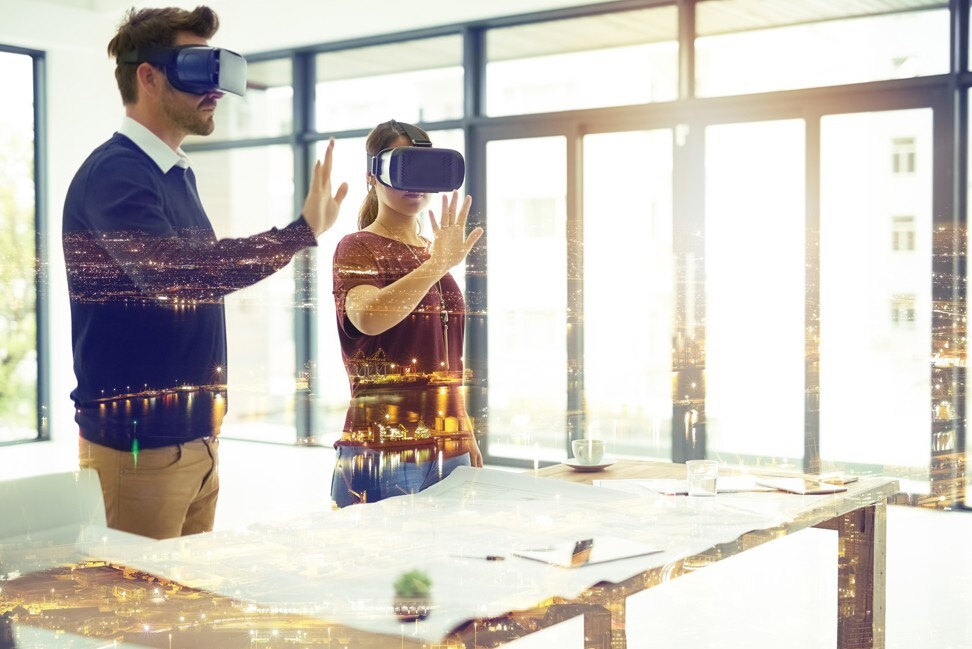VR gets touchy-feely with electronic skin – a game-changer for stroke rehabilitation and prosthetics to gaming and social media

John Rogers, a professor of bioengineering at Northwestern University in the United States, says that virtual reality (VR) technology is all very well. But while it can offer a deeply immersive experience, that experience is constrained: it is just an audiovisual one. What if physical sensation could be added to that?
“Electronic skins” – which add tactile sensation to virtual reality experiences – have been prototyped before, but using clunky electrodes and typically offering far from the instantaneous feedback required to make the touch experience feel as real as the visual one. But late last year, Rogers unveiled – after a decade of work – a wireless, battery-free silicon gel smart skin that allows the real-time recreation of a realistic touch sensation as transmitted from another device.

That could prove a game-changer for, say, stroke rehabilitation or prosthetics, but also the VR technologies used in gaming, social media and entertainment, or in prototype design and development. People will be able to feel a virtual touch in a way that feels authentic. The sensations felt by one person could be played back on another, or on a crowd of people.
It is certainly a step on from the myriad (and often blurred) spins on VR that also have made developmental advances in recent years – most notably the likes of augmented reality (AR), in which a real-world environment is enhanced by computer-generated information, and MR, or mixed reality, which merges physical and digital objects in real time. To date, MR has been used by golf spectators, in the teaching of anatomy and in the creation of lifelike holographic “people”.
“The idea [for the smart skin] originally had medical uses in mind, but obviously the tech is applicable to VR,” says Rogers, who is now working on a thinner, lighter version of his electronic skin, with a greater wireless range, too. Inevitably, this has received interest from VR developers. “That’s a space we’re planning to work in ourselves now. Skin sensation is the only mode of physical interaction with our environment, and when you think of human interaction, nothing is more intimate or communicative. So there’s a compelling need to bring that to VR.”
Virtual reality haptics – as the field of bringing touch to VR is called – already offers a less realistic form of touch sensation than the kind Rogers’ smart skin promises. Start-ups such as Plexus, Kaaya Tech, Exiii and HaptX have developed the likes of gloves, and even full-body motion capture suits, wearable computer interfaces that provide haptic feedback – through subtle vibrations – to their wearers. Or, as the marketing for Teslasuit puts it, the ability “to simulate experience and accelerate mastery in the physical world”.
How do these devices typically work? They house many actuators – which convert a signal into mechanical motion – that deliver variable frequencies, patterns and intensities to reflect certain stimuli; whether, for instance, the virtual environment is hot or cold, wet or dry, rough or smooth. There are limits, though: while Rogers is working on actuators that could mimic a twisting and other distinct physical sensations, he points out that recreating force – say, the sensation of being punched – will require a different, for the moment unclear, approach.

According to Alexander Padhaiski, partner in VR consultancy The Parallel, which has worked with Teslasuit, VR haptics are likely to find their initial primary role in training: VR training has been shown to lead to much greater retention than classroom-based training, and even leads to the building of muscle memory. Trainers are a limited and expensive resource, too – but their input can be embedded in a simulation to allow users to train alone. Such an advance could be especially valuable in high-stakes industries in which errors cost millions, or maybe lives; but could equally just as well be used to, for example, train people in certain sports.
“The tech is still very much in its infancy, but making VR haptic is really a no-brainer,” says Padhaiski, whose VR projects have included one with London-based Chinese artist Jacky Tsai. “VR has had problems – causing dizziness, for example – because of the differences between what the brain is processing visually and what the body feels. We need to be able to express in the body what a VR user sees in their headset. That will allow us to be able to simulate scenarios much more accurately.”
Haptic VR is likely to also see the advent of “virtual products”. At the moment, VR temporarily replaces the physical with the virtual to some or other end; but, as Exiii has proposed, the future could bring, for example, a virtual piano that only exists in virtual space but that actually feels like a physical piano when played. Digital objects could appear nearly the same as physical ones.
Much as digital cameras replaced film cameras because they offered new and distinct advantages, so virtual objects would, relative to physical ones, save on space and transport costs, be endlessly upgradeable and offer insights through data capture, too.
Just how quickly this all comes is, of course, another matter. As Padhaiski points out, the adoption rate for VR technologies to date has been considerably slower than people imagine; slower, too, than the industry expected.
For businesses to use VR is certainly challenging – and many have taken it on superficially, so to appear cutting-edge rather than actually be so. “But there’s no question that, especially with developments like haptics, the potential for VR is huge,” he says. “And the coming decade will see real change in its use.”
Want more stories like this? Sign up here. Follow STYLE on Facebook, Instagram, YouTube and Twitter .
Help us understand what you are interested in so that we can improve SCMP and provide a better experience for you. We would like to invite you to take this five-minute survey on how you engage with SCMP and the news.

Virtual reality technology has broadened our horizons to a dizzying degree, but scientists are now working on a physical dimension – that will be able simulate everything from changing temperatures to being punched – with applications in medicine, design and leisure